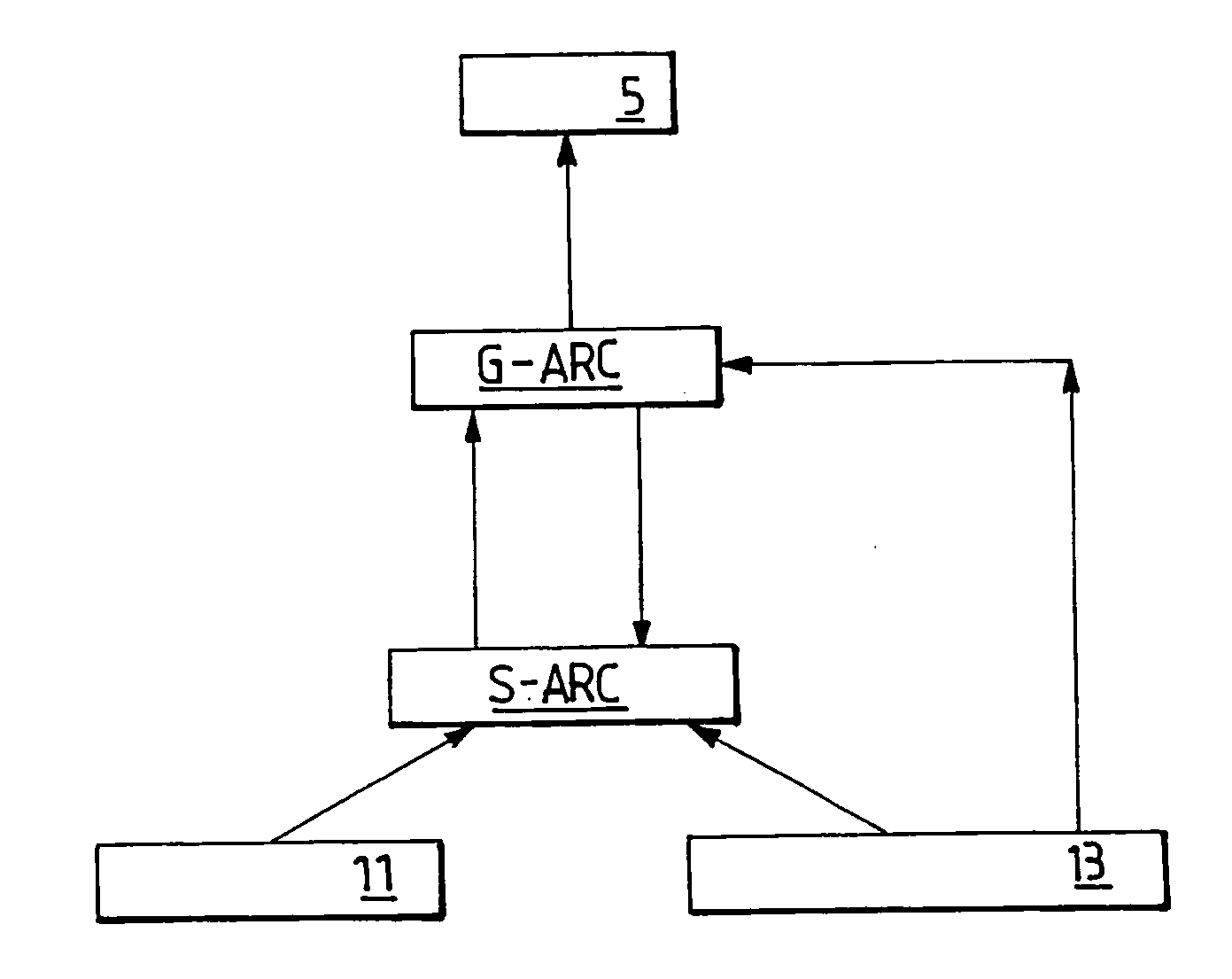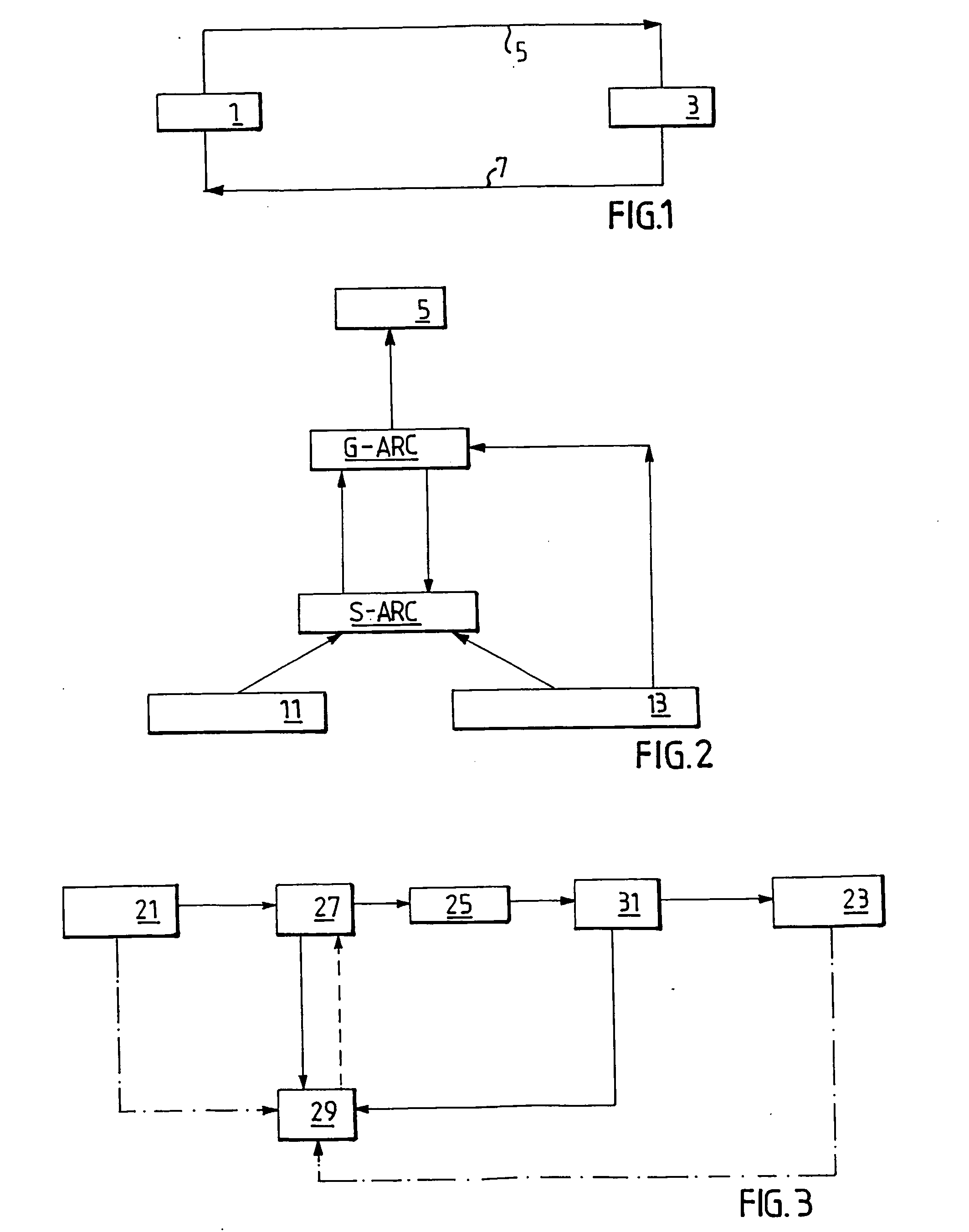Method and arrangement for adaptive rate control
- Summary
- Abstract
- Description
- Claims
- Application Information
AI Technical Summary
Benefits of technology
Problems solved by technology
Method used
Image
Examples
Embodiment Construction
[0029]FIG. 1 illustrates, very simplified, the technical context of the invention. A sender, for example, a client terminal, 1 transmits data to a receiver 3 through a channel 5. The receiver may be, for example, a network server. The channel 5 constituting the access links and network enabling the sender 1 to send data to the receiver. Typically, each ARC sender / receiver pair will set up a communication link serving as a back-channel 7 for the ARC sender-receiver pair that forms the communication link in the opposite direction. The access links and network enabling the receiver to send data, such as acknowledgement of received data, to the sender is called a back-channel 7.
[0030]FIG. 2 provides a logical view of the invention showing the logical units and the exchange of control data. The logical functions Application, G-ARC and S-ARC may be distributed between the sending and the receiving units in many different ways. The arrangement for adaptive rate control comprises a generic...
PUM
 Login to View More
Login to View More Abstract
Description
Claims
Application Information
 Login to View More
Login to View More - R&D
- Intellectual Property
- Life Sciences
- Materials
- Tech Scout
- Unparalleled Data Quality
- Higher Quality Content
- 60% Fewer Hallucinations
Browse by: Latest US Patents, China's latest patents, Technical Efficacy Thesaurus, Application Domain, Technology Topic, Popular Technical Reports.
© 2025 PatSnap. All rights reserved.Legal|Privacy policy|Modern Slavery Act Transparency Statement|Sitemap|About US| Contact US: help@patsnap.com


